5 'filth magnets' professional cleaners always notice in dirty fridges – and the easy fixes to avoid them in yours
Banishing these will help keep yours fresh


Most people likely think that their fridge is pretty fresh – that is, until a professional cleaner takes a look.
Although you might give the shelves a quick wipe down here and there, there are some tell-tale things professional cleaners always notice in dirty fridges that are magnets for further mess.
Here, they reveal down the five 'filth magnets' they look out for that could compromise your food safety, and advise how to clean a fridge.
5 things professional cleaners always notice in dirty fridges
Sanitizing yours is a chore that can't be avoided, but there are, however, a few bad home habits that could be making yours less than hygienic and attracting dirt and bacteria.
1. Storing unsealed produce
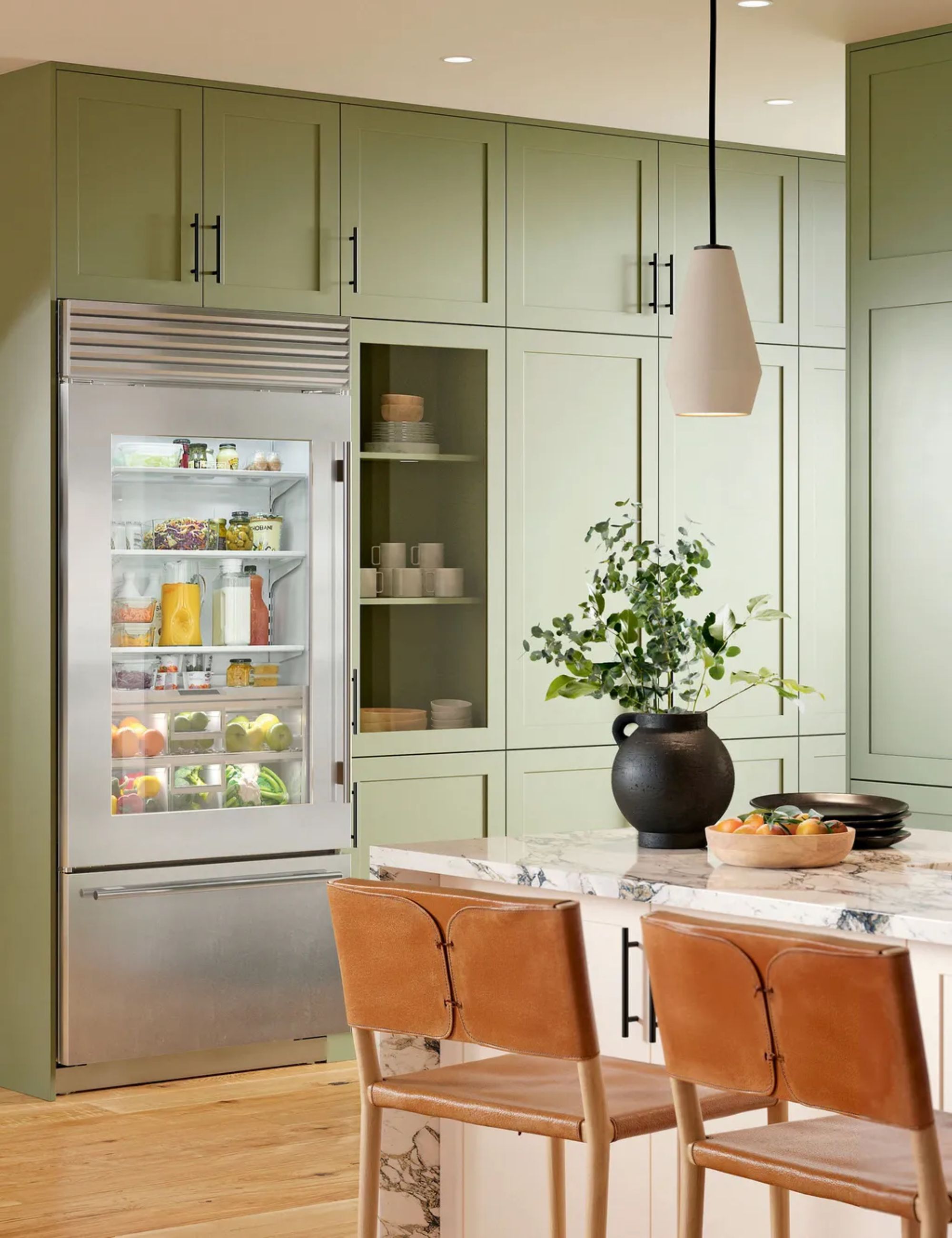
Keep stored items safe in dedicated containers.
When organizing a refrigerator, you should never store food in broken or open containers. This is one of the first things professional cleaners will notice in a dirty fridge.
Marisol Rivera, a cleaning expert with over twelve years of experience and a senior team member at Sparkly Maid Austin, begins, ‘I frequently see vegetables lodged in the crisper drawer still inside the plastic bags they came home in. The bags trap moisture, which creates slimy buildup and rots produce. When any one thing rots, it undermines all the food right next to it.
‘I suggest putting produce in containers that allow for airflow, or take the produce out of the bags and line the drawer with a dry cloth or dry paper towels [such as Bounty, from Walmart] to absorb lots of moisture.’
Design expertise in your inbox – from inspiring decorating ideas and beautiful celebrity homes to practical gardening advice and shopping round-ups.
We strongly recommend investing in glass food storage containers from Walmart. This pack of 12 containers come with clip-lock air-tight lids to keep food fresher for longer. For foodstuffs that need air flow, these berry bins with trays from The Container Store reduce spills while keeping delicate food fresh.
2. Expired food

Declutter your fridge every week to catch items before they rot.
Marisol continues, ‘I see this all the time – expired sauces, dressings, and leftovers get shoved to the back, then forgotten about. Old food not only starts to smell terrible, but bacteria also increase, which can cause it to leak and burst.
‘I suggest a "Fridge Check" one day a week – either the day you grocery shop or one day before to declutter a fridge of anything that is expired. Simply tossing out what is old will help keep everything clean and provide room for fresh items.’
For leftovers, it is wise to mark them with the date you put them in the fridge (or freezer, for that matter). Use fridge-safe labels, from Walmart, so that they do not peel off in the cold, and write with a permanent marker, such as a Sharpie (also available at Walmart).
3. Overcrowded shelving
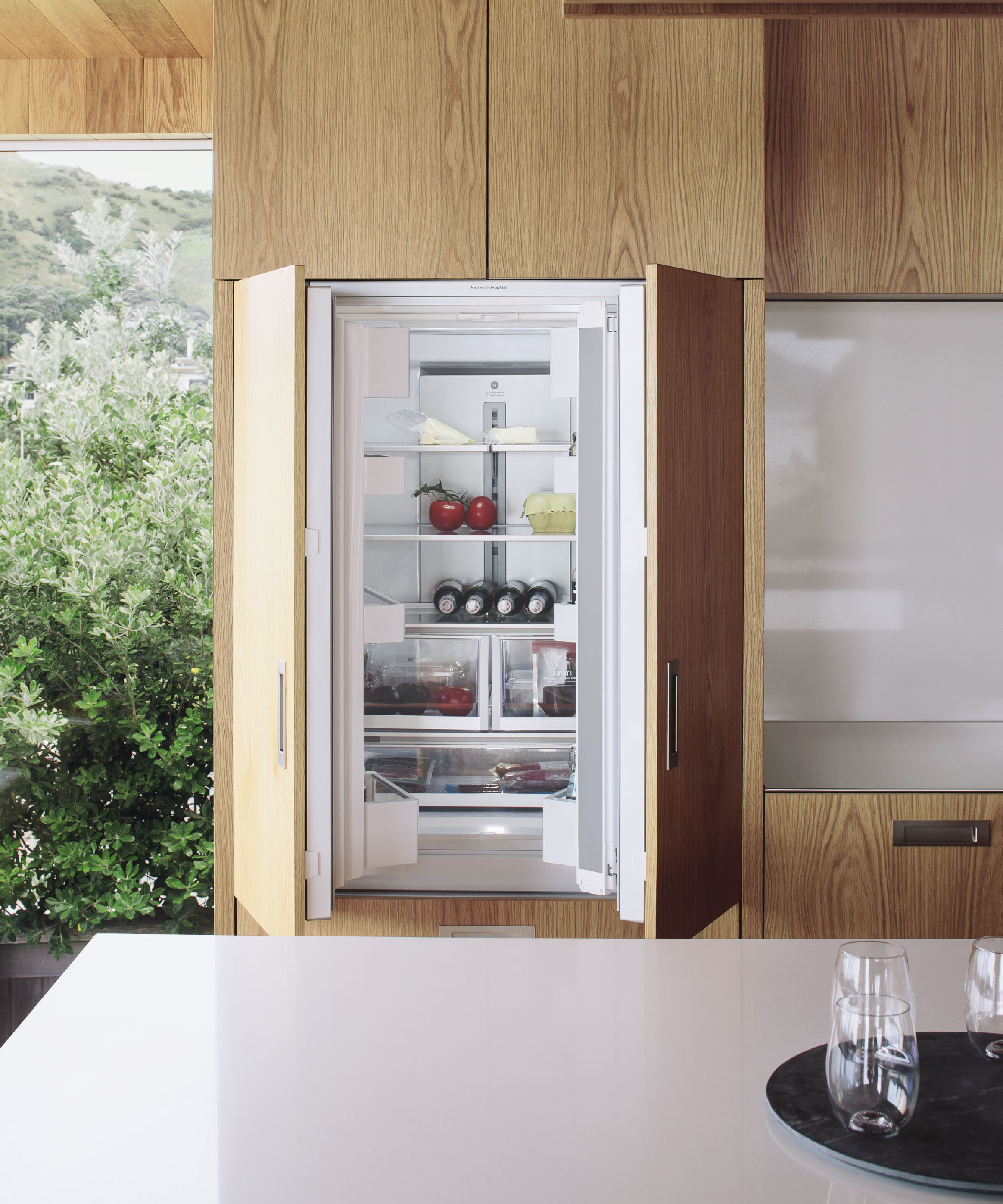
A well organized fridge is more hygienic and eaiser to navigate.
Not only does leaving visible space make a fridge look better, it can make it more sanitary, too. In fact, overcrowding is one of the biggest red flags cleaners notice in dirty fridges.
Scott Schrader, cleaning expert at CottageCare, explains, ‘Airflow is important for the fridge to function. With blocked airflow, the fridge cannot maintain temperature, so your food spoils or condenses. It is best to allow space between items, especially at the back, and the vent area. Your foods should not be stacked along the fridge walls either.’
Using roll-out fridge drawers, from Target, or fridge organizer bins, from Walmart, can help to space items out and group them by type, encouraging space on shelves while maximizing storage area.
4. Not ordering food correctly
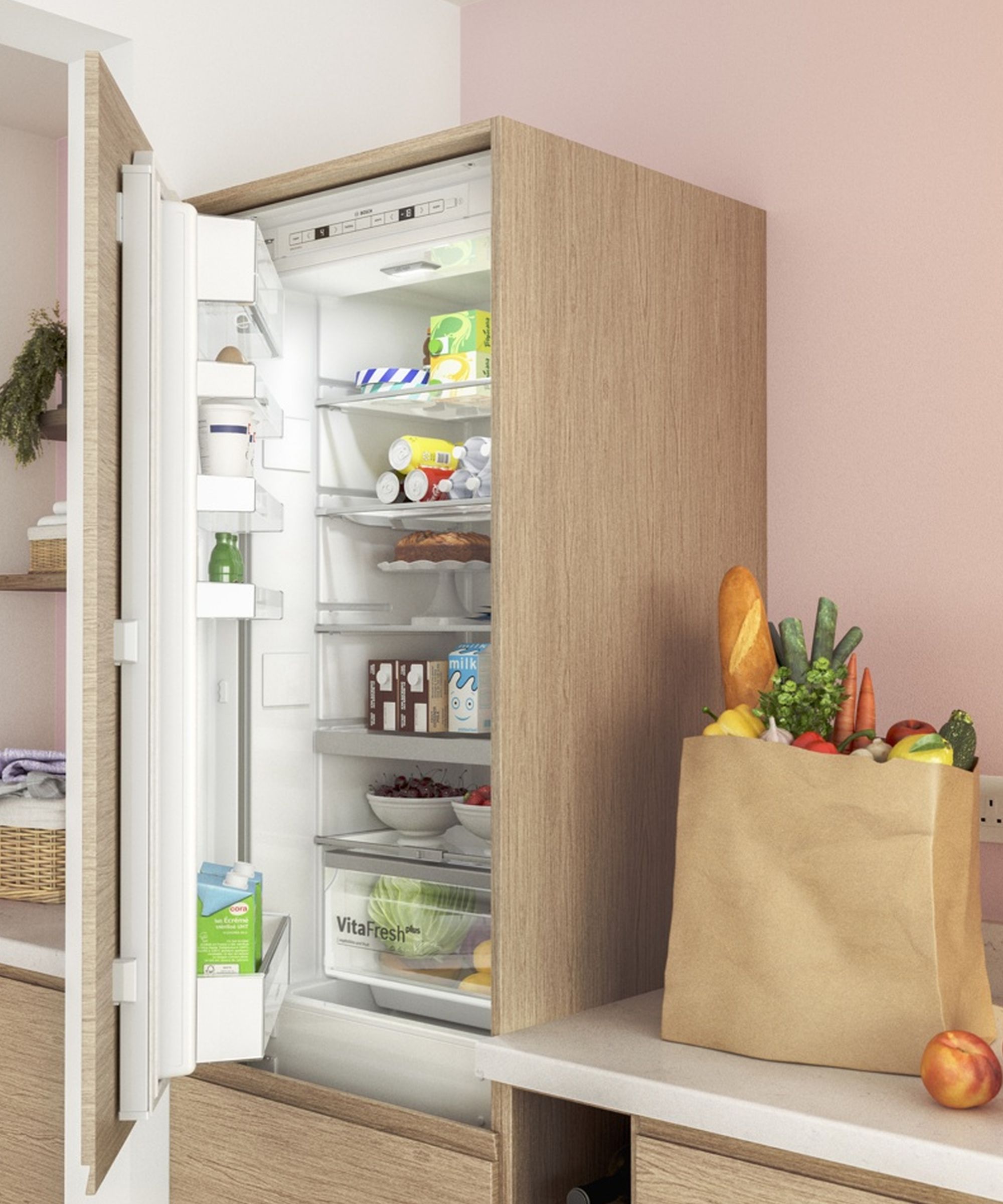
Where you put items in a fridge makes a huge difference.
One of the biggest fridge organizing mistakes risking hygiene is not putting food in the correct place. One thing a pro cleaner will certainly notice in a dirty fridge is if you have meat on a top shelf, for example.
Scott declares, ‘There is a correct way to store food in a fridge, and for good reason. For example, raw meat should always be stored on the bottom shelf, well away from cooked meat. This is to reduce the risk of cross-contamination.
‘Another good example is storing your milk on the door shelf. Ideally, milk should be kept on a normal shelf where it’s colder, although this isn’t a massive issue if your fridge is a good temperature.
‘Essentially, your food should be stored from least to most risky, running from top to bottom,’ Scott urges. ‘Think of it this way: If the food were to leak in some way, would it spill on the shelf below and risk contaminating other food. If this were meat juices, the answer is yes, whereas a bit of leftover pasta sauce is a far lower risk.’
5. Wet produce
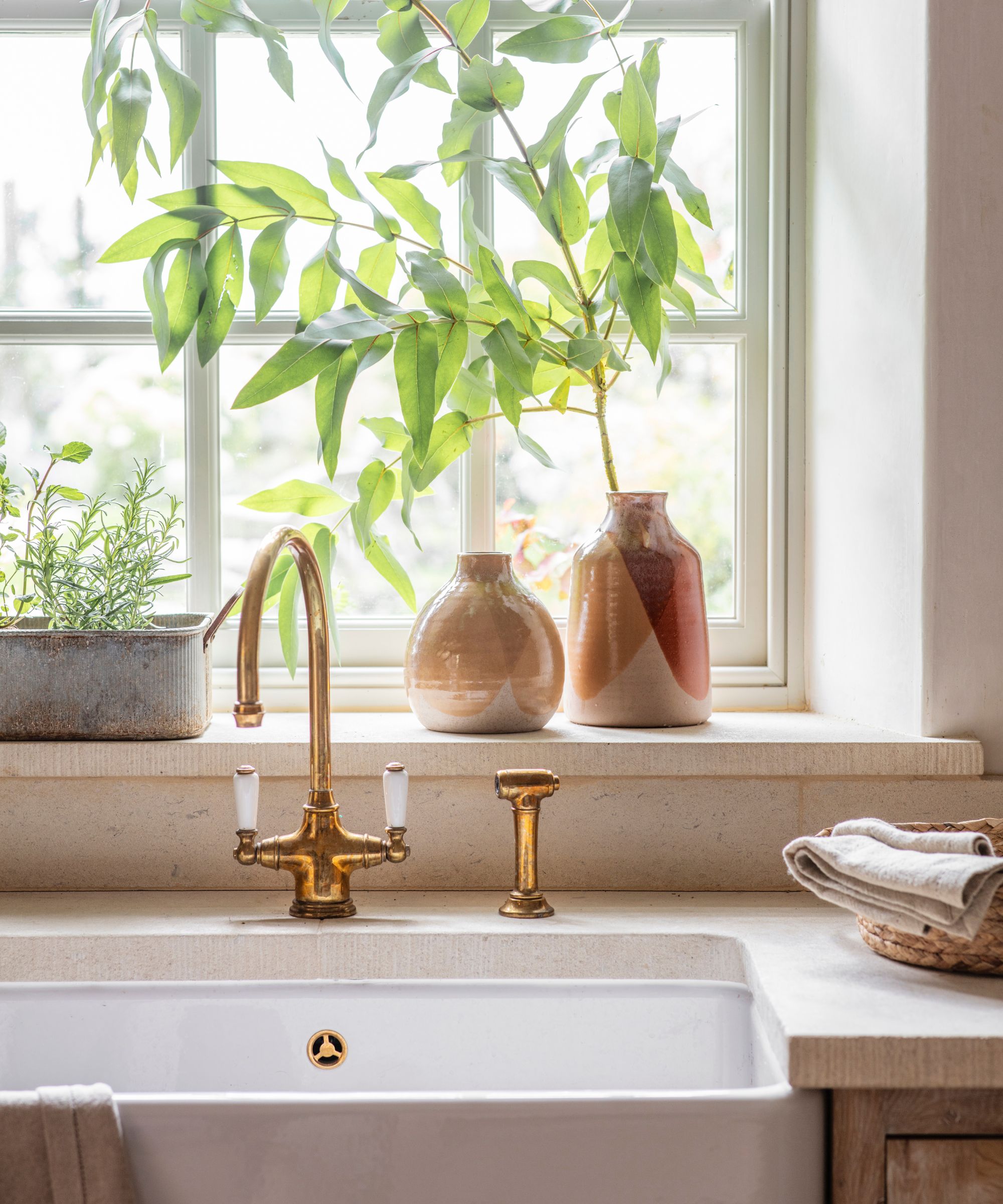
Dry produce after washing to prevent spills and premature expiry.
This might not be as dangerous as putting produce on the wrong shelves, but pro cleaners often spot wet produce in a dirty fridge.
Elizabeth Shields, operations manager at Super Cleaning Service Louisville, shares, ‘Washing your fruits and veggies right away is great, but don’t skip the drying part. If you store them wet, all that extra moisture invites mold, and that’s how you end up with slimy lettuce, fuzzy berries, or cucumbers that go soft way too fast.
'Dry them off well before storing, and for an extra hack, lay down a couple of paper towels in the drawer. It will absorb leftover moisture and keep things crisp and fresh.’
When cleaning produce, we suggest using a quality produce brush, available at Walmart, and following up by drying with a lint-free towel, such as muslin cloth, also at Walmart.
To ensure that any dirt and pesticides have been removed, you can also opt for a produce wash, such as the non-toxic Attitude Fruit & Vegetable Wash, from Amazon.
What to shop
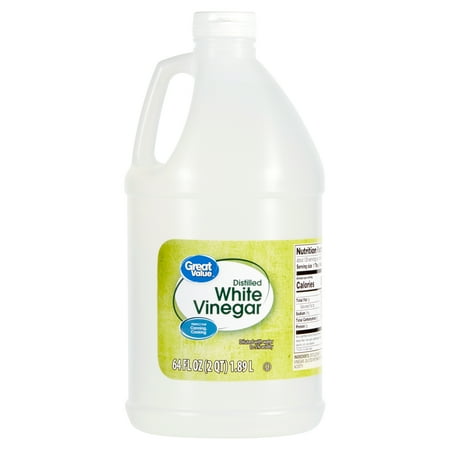
White vinegar is the perfect food-sage solution for fridges, as it is kills mold spores and eliminates odors for fresher food storage.
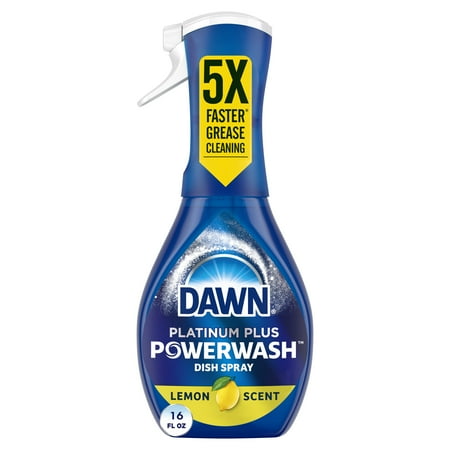
With a fresh lemon scent and a concentrated soap formula, Dawn Powerwash breaks down grease to limit how much you need to scrub, making it perfect for quickly removing sticky messes on fridge shelves in situ.
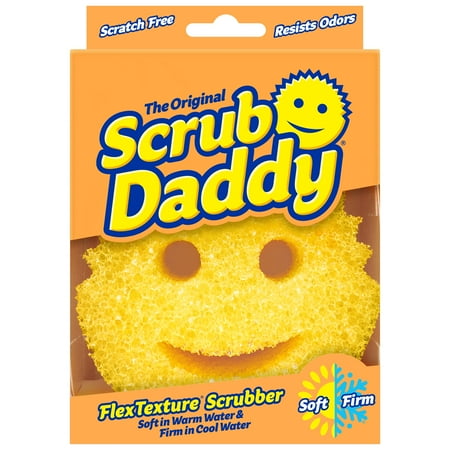
The Scrub Daddy sponge softens under hard water and toughens under cold water, allowing you to adjust the level of abrasive you need depending on the task at hand, be it cleaning shelves, wiping down the front of your fridge, or cleaning condiment jars.
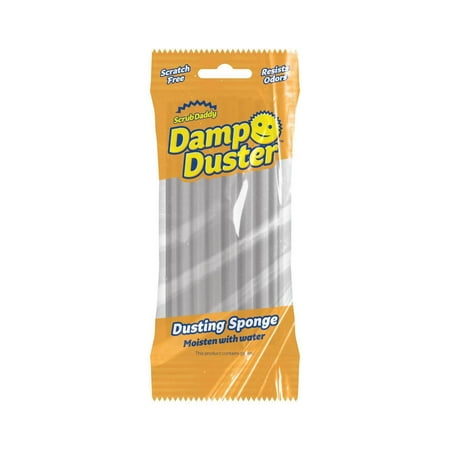
Tired of crumbs sticking to moist shelves rather than your cloth? The damp duster picks up crumbs and dust in its ridges with ease, making cleaning fridges ten times easier.
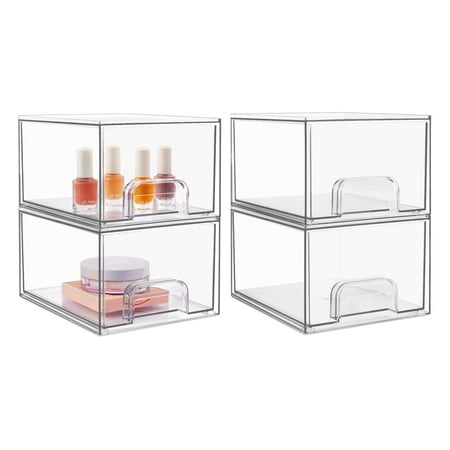
Make better use of vertical storage to save space on fridge shelves by using stacking drawers. Plus, it ensures food is encased and not loose, preventing spills and damaged produce.
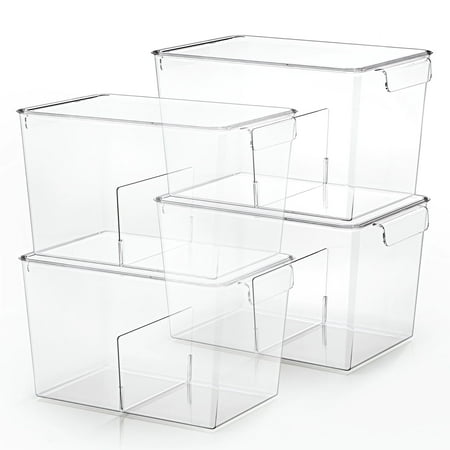
Using clear containers in a fridge keeps everything visible so nothing is lost or forgotten about, reducing the risk of food expiring without you noticing.
Meet the experts

Marisol is an experienced home cleaner, with over twelve years of experience in residential and commercial cleaning.

Scott is a cleaning expert at CottageCare, which is a leading home cleaning company with over 41 locations nationwide. He's a big believer in using eco-friendly cleaning solutions like baking soda.
Elizabeth Shields is the operations manager at Super Cleaning Service Louisville, a professional cleaning company based in Louisville, Kentucky. Aside from being a manager, Elizabeth showcases her diverse expertise as an author of online articles. Her writing prowess spans across a wide array of subjects, from insightful parenting advice to enlightening pieces on home improvement, wellness, and the topic of sustainability.
With all of those removed, it’s time to check if you’re cleaning the dirtiest part of your fridge. Neglecting it could result in mold, odors, and prematurely expired food, experts warn.

Chiana has been at Homes & Gardens for two years and is our resident 'queen' of non-toxic living. She spends most of her time producing content for the Solved section of the website, helping readers get the most out of their homes through clever decluttering, cleaning, and tidying tips. She was named one of Fixr's top home improvement journalists in 2024.